Confederate Battle Flag
The Confederate battle flag is easily one of the most recognizable symbols of the Confederacy, or at least one version of it is...
What many people recognize as "The" Confederate flag is actually the Battle Flag of the Army of Northern Virginia (the upper left section of the flag on the left). Much as was the case with Union battle flags, however, there were many different Confederate battle flag designs, and each one has a story.
In the picture above, we see the battle flag of the 6th & 7th Regiments of Arkansas Volunteer Infantry. This flag is basically just an adaptation of the second Confederate national flag, the "Stainless Banner."
While it is true that a majority of Confederate battle flags were based on the Army of Northern Virginia's design, many different battle flag styles were used in the Confederate Army. Some were based on a regiment's state flag, some were based on common battle flag designs (such as the Hardee Pattern), and still others weren't based on any other flag...
15th Arkansas Infantry Regiment (Northwest)
This Confederate battle flag was carried by the 15th Arkansas Infantry Regiment (Northwest). This regiment received the northwest designation to distinguish it from two previous units that had been raised as 15th Arkansas regiments.
The design that was used on this flag is known as the Van Dorn Pattern. Earl Van Dorn was a Confederate General who commanded the Confederate Army in the Trans-Mississippi Department early in the Civil War. To make sure that his units would all be carrying flags, that could not be confused with Union flags Van Dorn ordered that all his regiments carry a battle flag using his design.
Van Dorn's design called for a red flag with a crescent moon in the top left corner, and thirteen stars spread across the body of the flag. The 15th Arkansas's flag (above) is the only known Van Dorn battle flag to have its unit's name and battle honors added to the flag.
In the early days of the war this unit was not yet part of any organized regiment, but it fought well at the Battle of Wilson's Creek where its commander, Dandridge McRae received a commendation for coolness under fire. After this, the 15th Arkansas participated in a string of Confederate defeats culminating with its surrender at Vicksburg on July 4, 1863. The unit was eventually reformed and consolidated along with the 14th and 16th Arkansas regiments into the 1st Arkansas Consolidated Infantry Regiment of the Trans-Mississippi. This unit was surrendered in May 1865 by General Edmund Kirby Smith, but they did not formally surrender to Union troops. Choosing instead to simply disband and go home.
14th Tennessee Infantry Regiment
The flag carried by the 14th Tennessee Infantry Regiment (left) is a good example of the Battle Flag of the Army of Northern Virginia. By the end of the Civil War, the 14th Tennessee was much more ragged than this tattered old flag. Throughout the course of the war, roughly 1,000 men served in the 14th Tennessee, but only 40 men were present for Lee's surrender at Appomattox Court House.
The 14th Tennessee's costliest action was its participation in Pickett's famous charge during the Battle of Gettysburg. When the 14th was reformed after the failed charge, they were barely able to field 100 men. They also lost their battle flag in the charge: "The 14th Tennessee had 4 [color-bearers] shot down, the last of whom was at the enemy's works."
Despite their severely reduced state, the 14th Tennessee continued to serve in the Army of Northern Virginia, and in January of 1864, the regiment unanimously approved this resolution to reenlist:
"Whereas, having observed with mingled pride and gratification the noble steps taken by our brother Tennesseans in General Bate’s Brigade, in initiating re-enlisting, emulating this noble example, and believing that nothing would sooner secure our independence and the blessings of an honorable peace, than by sustaining to our utmost the worthy President and his noble Commander in Chief of the Army of Northern Virginia, therefore, resolved: that we, the officers and men of the 14th Tennessee Regiment, do hereby re-enlist for the war, pledging our lives and sacred honor so long as one man is left to bear our colors, or fire a shot, they shall float defiantly in the face of an insolent foe. Thereby making this regiment the first to re-enlist in the Army of Northern Virginia."
...and they carried out this resolution, with 40 men present to surrender their arms and colors at Appomattox Court House.
Hood's Texas Brigade
Hood's Texas Brigade was a force, made up largely of Texans, under the command of Confederate General John Bell Hood. Hood's Texans were well renowned for tenacity in battle, and their fighting capabilities were praised by Confederate Generals Stonewall Jackson, Robert E. Lee, and James Longstreet. One of Hood's Confederate battle flags (right) was simply a Texas state flag adapted for use as a battle flag.
Hood's Brigade played a large role in the Army of Northern Virginia, being present for every major battle that army engaged in except for Chancellorsville. By the end of the war, the brigade had become well known for performing crucial actions when battles hung in the balance.
The Brigade of Texans distinguished themselves in the Seven Days Campaign and the second Battle of Manassas (Bull Run), but they really cemented their fame at the Battle of Antietam (Sharpsburg). During this battle, Hood's brigade managed to hold back two Corps of Union troops and succeeded in saving the Confederate line from collapse. At one point, realizing that his outnumbered men could not withstand a concentrated attack, Hood ordered them to attack the Union troops in front of them. This aggressive action caused confusion for the Union commanders, and allowed the Texans to hold their position.
After the battle, Stonewall Jackson praised Hood's actions saying, "Though not of my command in the recently hard fought battle near Sharpsburg, Maryland, yet for a portion of the day I had occasion to give directions respecting his operations, and it gives me pleasure to say that his duties were discharged with such ability and zeal as to command my admiration. I regard him as one of the most promising officers of the Army."
Hood's Brigade continued to fight with distinction throughout the remainder of the war, and were present for Lee's surrender at Appomattox Court House. However, the price of their great reputation was a steep one. Of the roughly 5,350 men who served in the four regiments under Hood's command, only 617 were present when the Brigade was surrendered.
Just An Introduction
Obviously, we have only looked at three different battle flags and their units, but this is just an introduction to these old Confederate battle flags and the stories that go with them.
Like I said earlier, there were many different kinds of Confederate battle flags, and these four pictures bear that out even more (click on any picture to see the what unit served under it).
Just as in any army, the men who served under a Confederate battle flag found it very difficult to part with their old flags. When Lee's Army surrendered at Appomattox Court House, there were many scenes of men weeping over the flags they were forced to surrender.
Confederate General John Brown Gordon later wrote this about why the Confederate battle flag was so dear to the soldiers of the Confederacy: "They loved those flags, and will love them forever, as mementos of the unparalleled struggle. They cherish them because they represent the consecration and courage not only of Lee's army but of all the Southern armies, because they symbolize the bloodshed and the glory of nearly a thousand battles."
Like I said, this is just a small sample of a few stories behind these Confederate battle flags. If you know a story you want told, feel free to contact me and tell me about it.
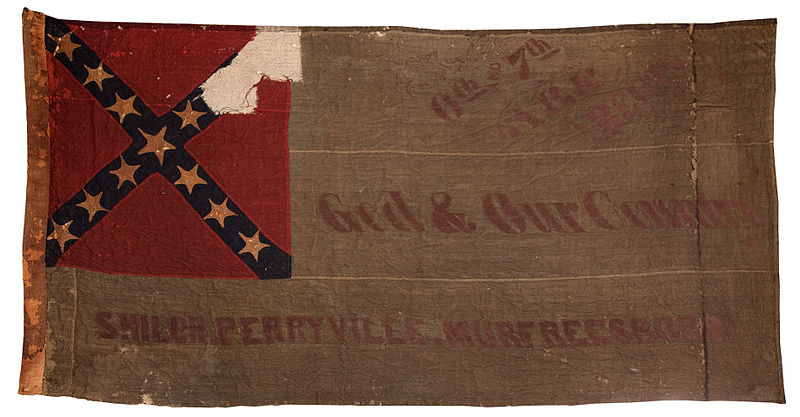

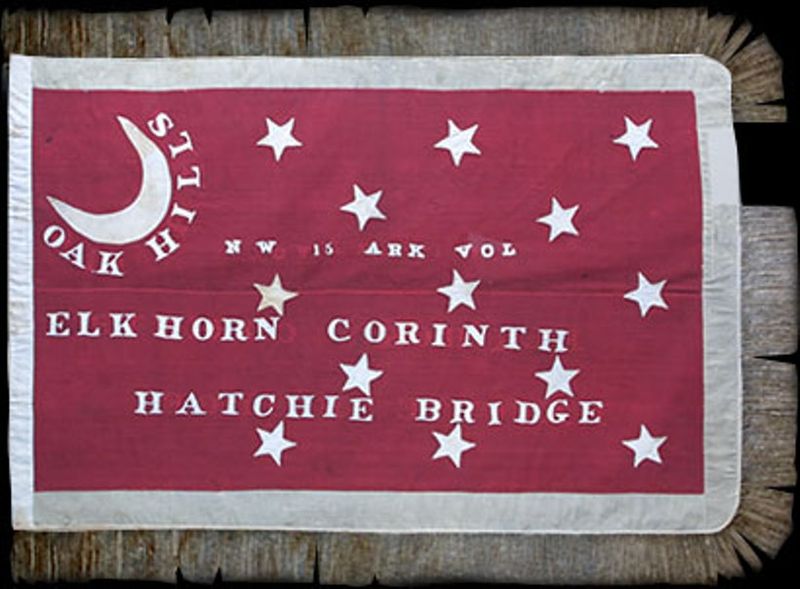
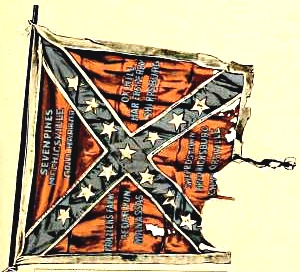

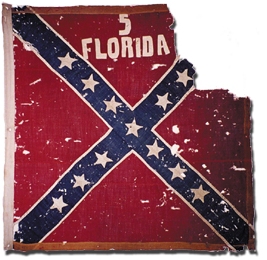
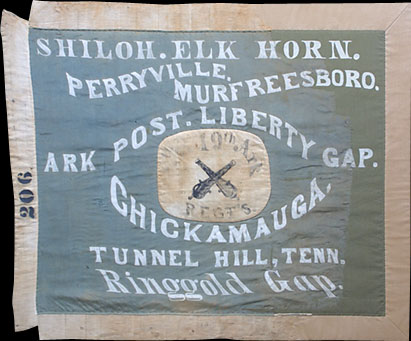
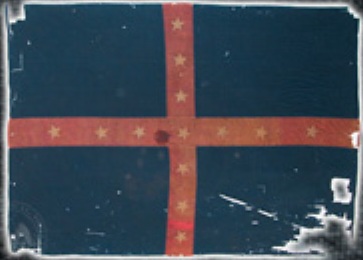
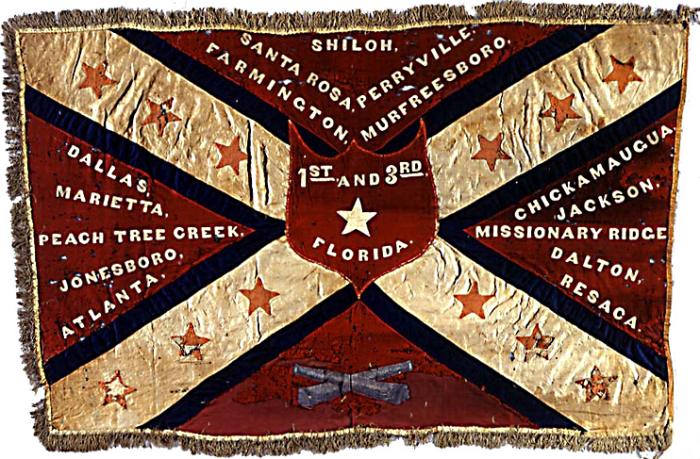
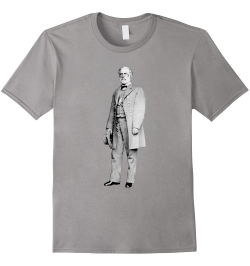
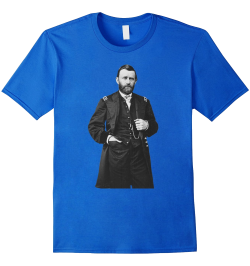

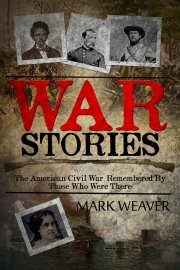

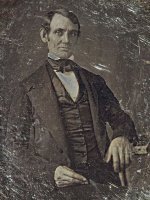
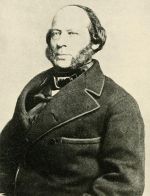
New! Comments
Have your say about what you just read! Leave me a comment in the box below.